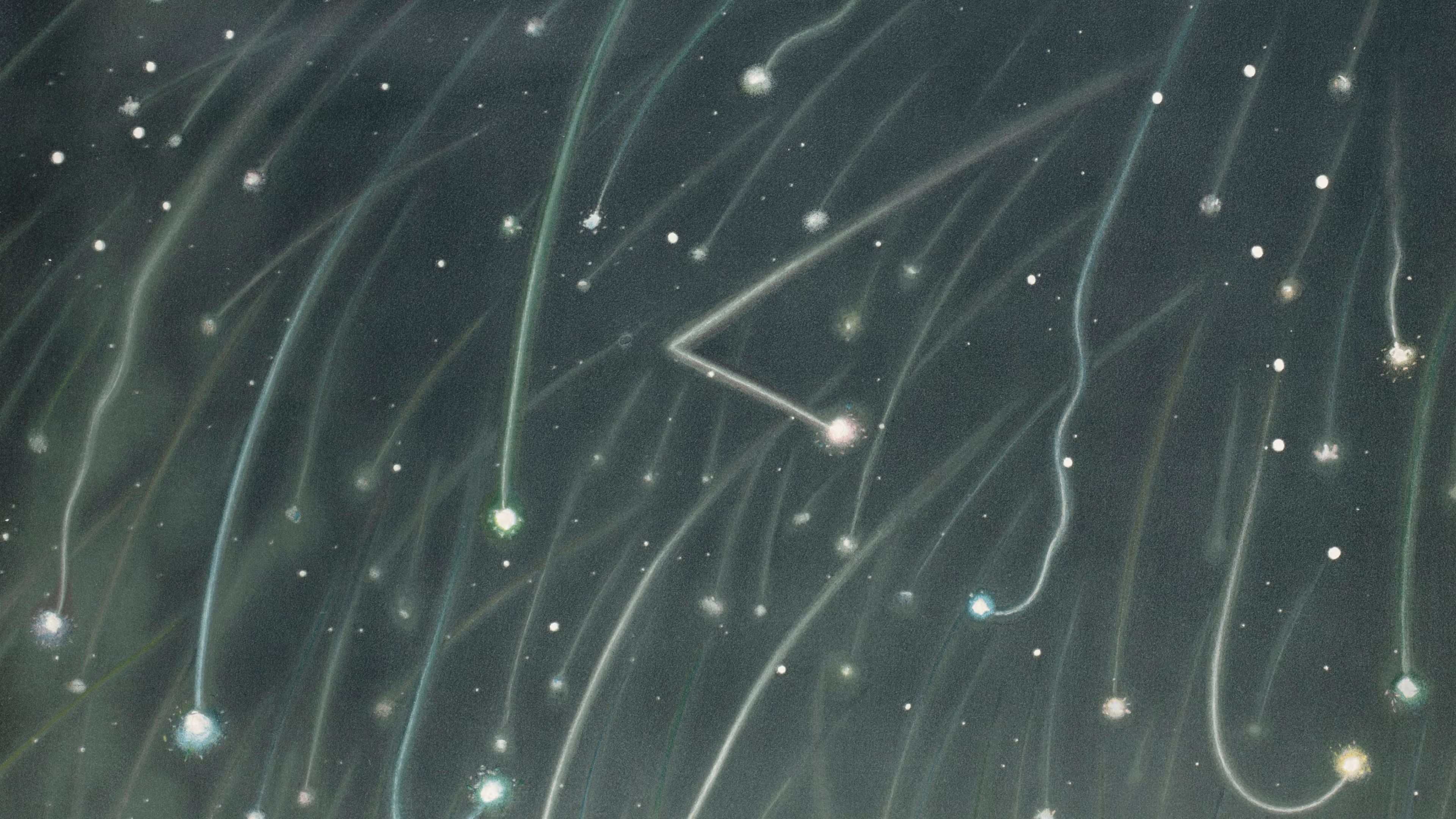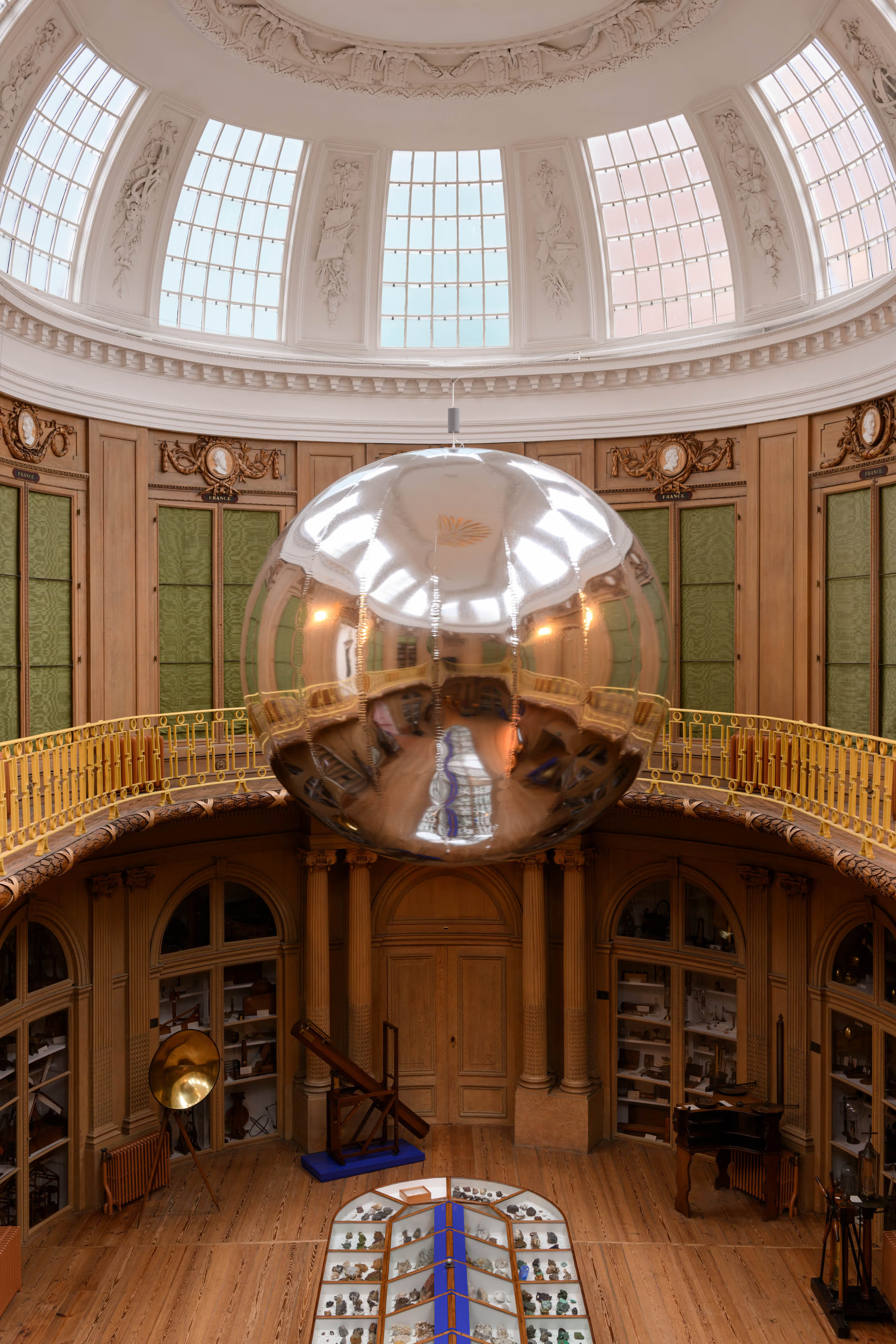
Cosmos
Past
Teylers Museum
Adults, Families
People have always lived with the stars. For centuries they were used as a navigational tool and served as a source of existential meaning. But our relationship with the stars is changing. Due to light pollution, 99% of people in Europe are now seeing fewer and fewer stars with the naked eye. By contrast, telescopes are able to see deeper and deeper into the universe, while space travel is exerting an increasingly significant influence on our lives. What are the effects of this?
In Cosmos, contemporary art enters into a dialogue with 18th-and 19th-century science in a way you will never have seen before at Teylers Museum. In the historical galleries old and new, and art and science are brought together.Cosmos shows that, to both artists and scientists, imagination is a key ingredient for gaining a better understanding of the universe.
Astronaut
An example of this is a large satellite by Trevor Paglen, which is floating through the Oval Room during Cosmos. The work calls attention to the huge numbers of satellites orbiting the earth these days. Those who look at this mirroring sphere will see a reflection of the oldest museum hall in the Netherlands, once built to display knowledge about the earth and the universe. The colourful Refugee Astronaut by Yinka Shonibare CBE was forced to leave his home planet when it became uninhabitable, and is now floating through the solar system. At Teylers he is surrounded by the petrified remains of extinct plants and animals. Katie Paterson reminds us that we are all made of stardust, while Saskia Noor van Imhoff’s new artwork for Teylers makes us aware of the things we will no longer see when our surroundings are increasingly flooded with light. And Vincent Verhoef puts major events on earth in perspective with his paintings depicting the position of the stars at the exact moment these events took place.

Trevor Paglen (1974), Prototype for a Nonfunctional Satellite (Design 4: Built 4), 2013
Photography: Mike Bink

Yinka Shonibare CBE, Refugee Astronaut VIII, 2024
Photography: Mike Bink
Astronomy
Apart from works by these contemporary artists, a number of planetariums, telescopes, and etchings from Teylers Museum’s 18th and 19th century scientific collection will also be on display, including a large reflecting telescope made by William Herschel (1738-1822), the type he used when he discovered Uranus in 1781.
The exhibition is inspired by the book In lichtjaren heeft niemand haast [no-one is rushing in light years] by the author and theatre maker Marjolijn van Heemstra, artist in residence for this exhibition. For years her work has been focusing on the relationship between humans and the cosmos, and the impact light pollution has on this relationship.

Marjolijn van Heemstra.
Photography: Franck Doho
Publication
The exhibition is accompanied by a book, published by Jap Sam Books, which includes new poems and essays by Marjolijn van Heemstra. During her residency at the oldest museum of the Netherlands she found inspiration in lunar photographs, star globes, and planetariums from its collection. Please note: the publication will be available from March 7.